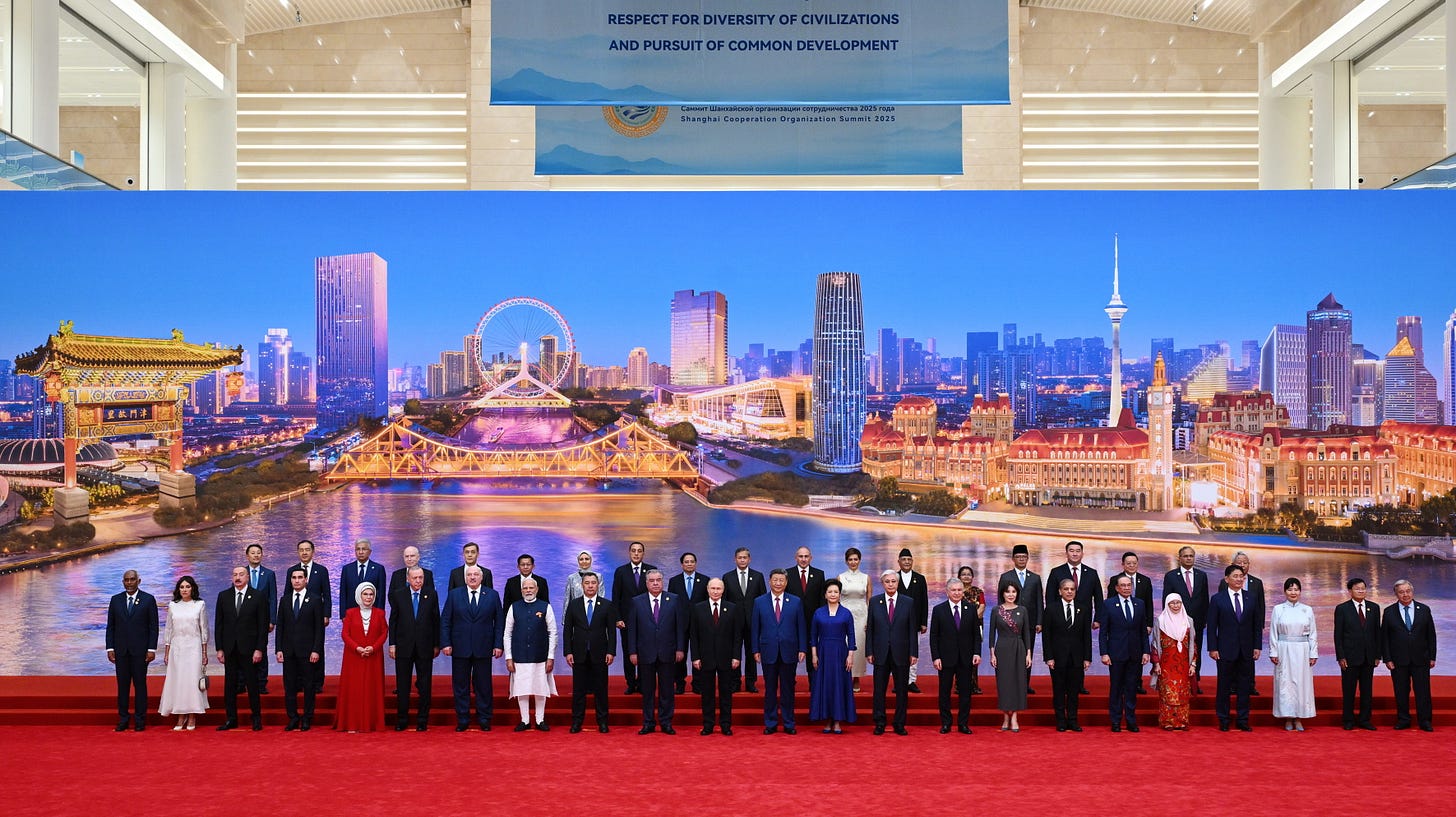SCO summit in China puts Sino-Russian alignment on display—and the “Global South” in motion
In Tianjin, the Shanghai Cooperation Organization offered more than pageantry—it showcased a maturing counterweight to Western-led institutions, binding uneasy neighbors through currency, drills, and
Group photo of heads of state and spouses at the 2025 SCO Summit reception in Tianjin. Photo: Press Service of the President of the Republic of Azerbaijan.
Tianjin’s SCO summit staged an unmistakable tableau: Xi Jinping as convener, Vladimir Putin as honored partner, and a broad cast of Eurasian leaders leaning into forums that run parallel to Western institutions. The SCO remains a tent of uneasy neighbors—India’s presence ensures it is no monolith—but the gravitational pull is clear: greater use of local currencies in trade, more choreography of joint drills, and diplomatic signaling that blunts Western leverage.
For Central Asia, this is ballast and risk: diversified markets, but tighter dependence; security cooperation that can crowd out reform. For Europe, it is the backstop on Russia’s sanctions survival. For Southeast Asia and the Pacific, it complicates hedging strategies by normalizing overlapping, sometimes rival architectures—SCO, BRICS, and ASEAN-centric forums—each with its own norms and toolkits.
Multipolarity isn’t new; what’s new is its institutionalization. The test for the West is to compete by offering connectivity, capital, and climate resilience without forcing binary choices. The test for the SCO is to deliver public goods, not just pageantry.
Our Take: Compete on offerings, not ultimatums—so bloc politics don’t harden into incompatible security orders.

